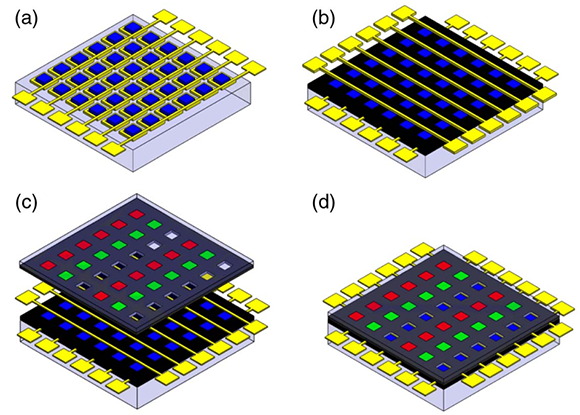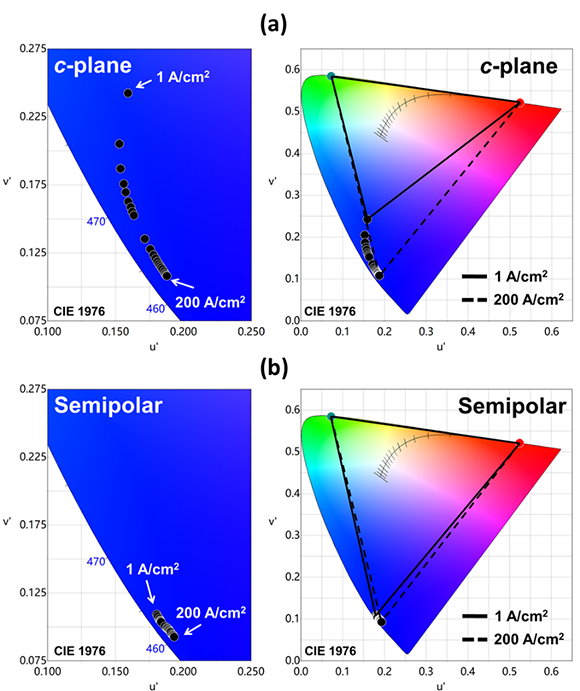As a candidate for the next generation display technology, micro-LED has the potential to replace LCD and OLED display technology. However, micro-LED still faces some difficulties that need to be overcome. First is the wavelength stability of micro-LED chips. The micro-LED device needs to dynamically adjust the operation current according to the intensity of ambient light, so the wavelength of the Micro-LED will shift significantly, resulting in serious color shift. Second is the fabrication of the quantum-dot color-conversion layer. The traditional spray process is still too slow to fabricate commercial quantum-dot color-conversion layers.
Researchers from Taiwan Chiao Tung University, Xiamen University, Yale University and Saphlux Inc. work together to solve the above problems, A semipolar (20-21) Micro-LED array combined with a quantum-dot photoresist (QDPR) technology is used to prepare a full-color Micro-LED device with high color stability. The result is published in Photonics Research, Vol. 8, Issue 5, 2020. Corresponding authors of this paper are professor Hao-Chung Kuo in Taiwan Chiao Tung University and associate professor Tingzhu Wu in Xiamen University (Sung-Wen Huang Chen, Yu-Ming Huang, Konthoujam James Singh, et al. Full-color micro-LED display with high color stability using semipolar (20-21) InGaN LEDs and quantum-dot photoresist[J]. Photonics Research, 2020, 8(5): 05000630).


Figure 1. (a) Fabrication of micro-LED array on semipolar GaN epitaxial wafer, (b) deposit black matrix to flatten the micro-LED array, (c) use standard photolithography process to prepare QDPR color-conversion layer, (d) assemble the micro-LED array and the color-conversion layer.
The research team has prepared a micro-LED array on a semipolar (20-21) GaN epitaxial wafer. Because of the characteristics of the semipolar materials, the internal polarization effect is fundamentally reduced, which can effectively reduce the quantum confinement Stark effect and improve the wavelength stability of micro-LED array. Meanwhile, the quantum-dot photoresist is fabricated by mixing the quantum dot and photoresist via a special method, and the large-area preparation of the color-conversion layer is realized by utilizing the standard photolithography process.

Figure 2. Color gamut under various current densities for (a) c-plane and (b) semipolar μ-LED.
Prof. Kuo who leads the research team says that the full-color micro-LED device based on both the semipolar GaN and the QDPR has not been reported in the literature. This work can improve the wavelength stability of micro-LED devices at different current densities, realize the batch preparation of color-conversion layers, and effectively promote the commercial application of micro-LED technology in the future.


